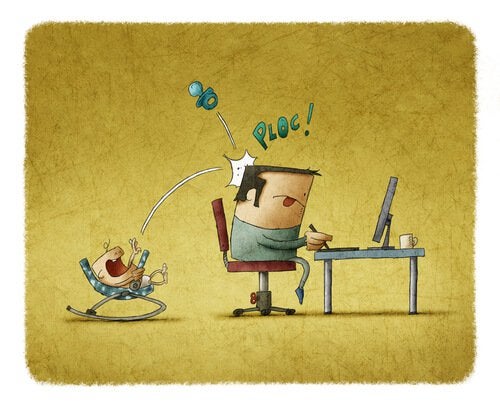The term hyperactivity has become very popular. Many parents think that their children suffer from this disorder, that their children are hyperactive children, as to the advocates and defamators of the existence of such a disorder, it seems that there are not so many children who suffer from it to the point of justifying the large number of diagnoses that have been made, that is, are we talking about a disorder?overdiagnosed.
There are many parents, many of them, who go to the centers of psychology, child psychiatry or neurology in search of a diagnosis that confirms their suspicions, a suspicion they believe points to their child being hyperactive, the truth is that this diagnosis is usually unconfirmed and that the parents leave the office more discouraged than they entered (however contradictory it may seem) , and at other times this diagnosis is confirmed, but is made incorrectly.
- During an initial consultation with the parents.
- After identifying the problematic behaviors.
- An evaluation of the dynamics of the child and the family is carried out.
- If it is necessary to intervene in the family to optimize the family dynamics and behavior of the child.
A few days ago, reading an online text that read, “There are more hypersive parents than hyperactive children,” I wondered and it made me think and decide to write an article on this topic, I thought there would be some interesting questions. Then let’s go.
There is and is known the huge demand for diagnoses of attention disorders or attention deficit disorders with or without hyperactivity disorder (ADHD) in children who do not concentrate in class, do not do their lessons, move too much, are they more restless?, we can list more complaints that, disguised as symptoms, lead parents or teachers to believe that these children (who do not meet their expectations) have a psychological problem or disorder.
They consult with different professionals and specialists to diagnose and classify their children as hyperactive so that they can be calm and, at worst, treat them and, in this way, act hyperpastively.
It is true that mothers and fathers do not spend all day sitting watching TV or looking at their mobile, many even have more than one job away from home, in addition to household chores, every day they do not stop, are stressed, are in a hurry, are very busy (like children) and arrive late and tired home, spend very little time with their children and the short time they spend is passive.
Parents and children have so little energy when they get home that they don’t want to play in the street, cook together, there’s no time to jump on the ground to play at home, tickle in bed, do block tricks, sing or dance, laugh together, make up stories with dolls or animals, tell stories, etc.
Technology and screens occupy these shared moments, so children don’t have the opportunity to expend their energy, even suffer symptoms of anxiety, excessive stress or sadness, boredom or exhaustion, and parents begin to worry about these symptoms.
“Really happy parents are not usually in bars. -Adolfo Kolping-
I firmly believe that it is worth more joy than the hassle of spending more time with children to play and be present with them for the duration of childhood, so you have to strive to create other ways to be with them based on their maturity and special needs. It’s never too late for an exam and a change.
“Every day of our lives, we make deposits in our children’s memory bank. -Charles Swindoll-
Because there aren’t as many hyperactive children, not so many kids with behavioral problems, there are many more hyperactive parents who aren’t responsible for parenthood. Even having chosen it, it seems that they do not realize all that it entails, spend energy, spend time with their children, attend to the needs of their children. Also to achieve many achievements, moments of joy and strengthening of the parental filial bond, which is undoubtedly the basis of a good psycho-emotional development of children.
When something doesn’t work at home or we realize that our kids may have a problem, it’s time to stop and analyze the situation.
Main image courtesy of JrCasas.

